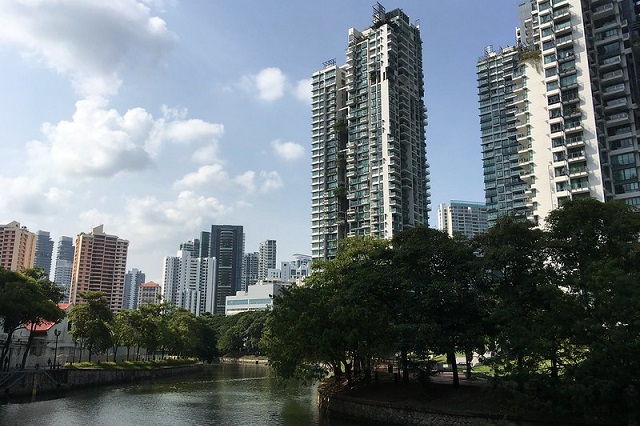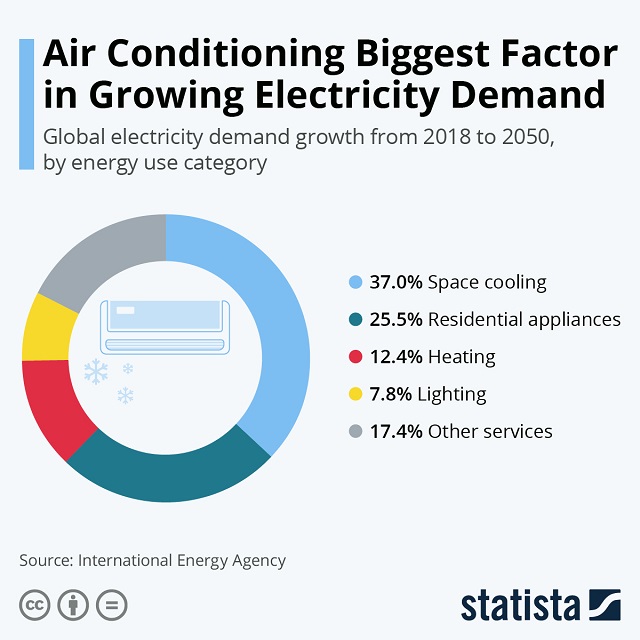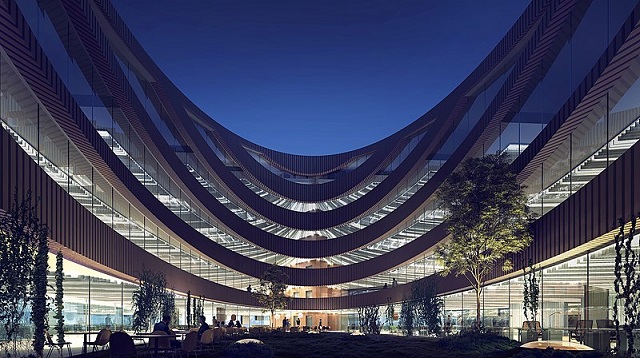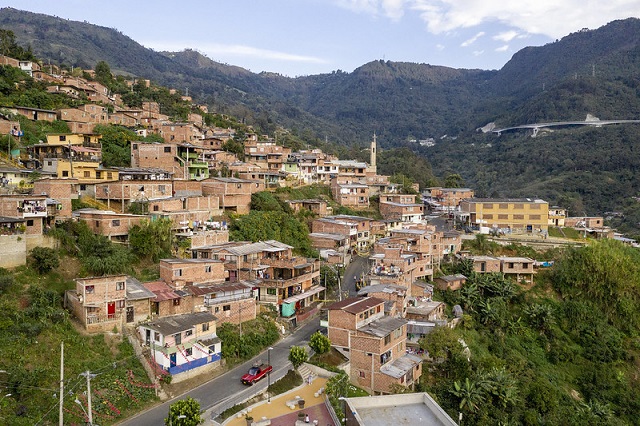At the 2021 UN Climate Change Conference (COP26), more than 1,100 cities representing a quarter of global CO2 emissions signed up to the Cities Race to Zero. In doing so, they committed to ambitious, inclusive and equitable climate action to hold global temperature increase to 1.5 degrees C (2.7 degrees F). At COP27 next month, these cities will be expected to demonstrate progress and explain how they plan to deliver on their commitments.
3 Essentials for Integrated Urban Climate Action
Published by TheCityFix (blog by WRI Ross Center for Sustainable Cities) on 21 October 2022
Authors: Michael Doust, Nathalie Badaoui and Leo Horn-Phathanothai
Guadalajara’s metropolitan municipalities commit to achieve net-zero emissions while addressing social inequalities through metro-level projects, such as a new 42-kilometer Bus Rapid Transit (BRT) line. Photo: Alvarado/Shutterstock
Cities have never been more engaged on climate action.
With cities accounting for up to 70% of global CO2 emissions and urban areas being especially exposed to the impacts of climate change, city action is critical to achieving an inclusive, resilient, zero-carbon and nature-focused future, especially in the context of the current global energy crisis. Fortunately, cities are uniquely positioned to drive just the kind of ambitious climate action that scientists say is needed.
By using existing technologies and policy options across buildings, transportation, materials and waste, research shows cities can reduce emissions by 90% by 2050. At the same time, transitioning to low-carbon and resilient infrastructure can improve quality of life, health, and access to economic opportunities of the most vulnerable populations by bridging the “urban services divide.”
To help cities on their journey, we propose three essentials to advancing climate action in cities:
1) Make Climate Action About People
Cities need to balance a wide range of competing priorities. For many, issues such as public health, housing and economic growth rank above climate change in the concerns of most citizens and local authorities. Traditional climate mitigation and adaptation entry points are often insufficient in persuading cities to take action at the scale and pace necessary.
To succeed and provide new motivations to act, cities need to make connections between their wider environmental, social and economic goals and climate action — a concept we refer to as “integrated climate action.”
Integrated climate action begins with integrated planning, which actively seeks out synergies between mitigation and adaptation goals and other local priorities such as economic growth, clean air, energy security, housing, access to services, etc. These synergies aren’t hard to find. Climate change is inextricably linked to tackling social and economic inequalities. Our research shows how closing the urban services divide —reducing inequalities city residents’ abilities to access decent housing, clean water, sewer systems, electricity, transport and jobs — can be one of the most powerful entry points for advancing ambitious climate action.
Cities around the world are already leading the way. For example, Metropolitan Area of Guadalajara Climate Action Plan (CAP) shows how climate action can drive cross-sectoral collaboration across jurisdictions. All nine of Guadalajara’s metropolitan municipalities committed to a achieve net-zero emissions while addressing social and spatial inequalities through metro-level projects, such as a new 42-kilometer Bus Rapid Transit (BRT) line. The project prioritizes giving the area’s most vulnerable groups access to public transport and improved air quality.
Similarly, in Mumbai, where 50% of the population lives in informal settlements, the city’s Climate Action Plan aims to increase poor households’ access to climate-resilient housing, green spaces, cooling and health centers to jointly tackle emissions, heat-related risks and socio-spatial inequalities.
2) Get Ready for Integrated Implementation
Incremental mitigation and adaptation projects advanced in isolation, under sectoral silos, will be insufficient. Cities’ need a whole-system approach that unlocks collaboration across sectors and institutional boundaries, effectively embedding climate goals in all key decision-making for a — such as strategic, land use and budgetary planning.
For example, Rio de Janeiro, Brazil embedded targets from its Sustainable Development and Climate Action Plan in its current five-year strategic plan (2021-2024). By doing so, the current city administration ensures that climate action is implemented in a cross-cutting way across multiple city departments — everything from health care to ecosystem services management to innovation and green jobs. It also ensures budget is allocated appropriately for climate action implementation.
Land use planning is oftentimes one of the most powerful policy instruments cities have at their disposal for implementing transformative climate action. Victoria Gasteiz, Spain, for example, prioritizes community engagement, compact land use, sustainable mobility, and public and green spaces in its land use planning. These initiatives can simultaneously foster mitigation, adaptation and equity. With shifts from car travel to low-carbon mobility like biking and walking, the city’s CO2 emissions dropped by 42%. Promoting urban green spaces countered urban sprawl, increased biodiversity, reduced pollution and urban heat islands, and improved water management. Re-densification and rehabilitation of the city center has kept housing affordable and increased equitable access to urban services like public transport.
3) Get the Right People Together
Local governments do not operate in isolation, and many of the levers to accelerate mitigation, increase climate resilience and ensure equitable benefits lie beyond cities’ direct authority. Research from the Coalition for Urban Transitions estimates that 37% of urban mitigation potential requires collaborative action among national, state and city governments.
Responding to the climate emergency requires an all-hands-on-deck approach, where cities actively collaborate with regions, other cities, businesses and national policymakers to unlock investments for urban climate action while raising the bar for more ambitious climate action at the national level.
The Mexican Climate Community is an example of how sub-national governments can collaborate for zero-carbon development. This network of municipal-, state- and federal-level public servants promotes training, peer-to-peer exchange and tailored support on projects ranging from energy efficiency to nature-based solutions to low-carbon transport. It also connects sub-national governments with the private sector to help achieve cities’ Race to Zero pledges.
WRI’s Urban Water Resilience Initiative is another example of the complex governance required for integrated climate action. Through this initiative, a coalition including research institutes, civil society actors, development agencies, national governments, businesses, private investment groups, national banks and consultancies are tackling technical and financial barriers to improve water resilience in six cities in Ethiopia, Rwanda and South Africa. The initiative will soon launch the African Cities Water Adaptation Fund (ACWA Fund) to support 100 African cities in financing urban water resilience measures by 2032.
Integrated Climate Action Means Accelerated Climate Action
Achieving net-zero emissions by mid-century and rapidly increasing our resilience to extreme weather is a must if the world is to have any chance of tackling the climate crisis. To meet these goals in a way that enhances justice and equity, reduces the urban services divide, and protects nature necessitates an integrated and collaborative approach. It also requires improved accountability mechanisms to ensure that cities and their partners deliver on their commitments.
Cities are finally making ambitious climate action promises. Now comes the hard part of turning promises into progress.
Retrieved from https://thecityfix.com/blog/3-essentials-for-integrated-urban-climate-action/
This article originally appeared on WRI’s Insights.
Michael Doust is Director of Urban Efficiency & Climate for WRI Ross Center for Sustainable Cities.
Nathalie Badaoui is Senior Manager for Integrated Climate Action at WRI Ross Center for Sustainable Cities.
Leo Horn-Phathanothai is Head of WRI’s UK Office and Director for Strategy and Partnerships at WRI Ross Center for Sustainable Cities.



